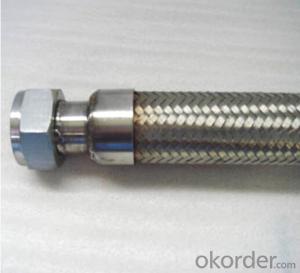Flat stock metal, the unsung hero of the manufacturing world, is a versatile and reliable material that has been used in various applications for centuries. From the ancient Egyptians using copper to create tools and weapons, to the modern-day construction of skyscrapers and automobiles, flat stock metal has been an essential component in the development of human civilization. In this article, we will explore the fascinating world of flat stock metal, its properties, applications, and why it is still relevant in today’s fast-paced world.
The Essence of Flat Stock Metal
Flat stock metal is a type of sheet metal that has been flattened or rolled into a thin, uniform thickness. It is available in a wide range of materials, including aluminum, steel, brass, bronze, and stainless steel, each with its own unique properties and applications. The versatility of flat stock metal lies in its ability to be easily cut, bent, and shaped into various forms, making it an ideal choice for a wide range of projects.
A Journey Through Time
The history of flat stock metal is as rich and diverse as the material itself. Ancient civilizations used copper and bronze to create tools, weapons, and even decorative items. The Egyptians, for example, were known for their intricate metalwork, using flat stock metal to create beautiful jewelry and art pieces. As technology advanced, so did the uses of flat stock metal. During the Industrial Revolution, steel became the material of choice for many industries, including construction and transportation. Today, flat stock metal is used in everything from aerospace to electronics, showcasing its enduring appeal and utility.
The Versatility of Flat Stock Metal
One of the most significant advantages of flat stock metal is its versatility. It can be used in a wide range of applications, from simple household items to complex engineering projects. Some common uses include:
– Automotive: Flat stock metal is used in the construction of car bodies, engine components, and various other parts. Its strength and durability make it an ideal material for the demanding world of automotive manufacturing.
– Construction: In the construction industry, flat stock metal is used for roofing, siding, and structural components. Its ability to withstand harsh weather conditions and resist corrosion makes it a popular choice for builders.
– Aerospace: The aerospace industry relies on flat stock metal for its lightweight and high-strength properties. It is used in the construction of aircraft components, including wings, fuselage, and landing gear.
– Electronics: Flat stock metal is used in the manufacturing of electronic devices, such as computer cases, circuit boards, and various other components. Its excellent conductivity and heat dissipation properties make it a preferred material in this field.
– Art and Design: Artists and designers also appreciate the versatility of flat stock metal, using it to create sculptures, furniture, and other decorative items. Its malleability allows for the creation of intricate designs and shapes.
The Art of Crafting with Flat Stock Metal
Working with flat stock metal is both an art and a science. It requires a combination of technical knowledge and creative flair to transform a simple sheet of metal into a functional and aesthetically pleasing object. Some of the techniques used in crafting with flat stock metal include:
– Cutting: Cutting is the first step in shaping flat stock metal. It can be done using various tools, such as shears, lasers, or plasma cutters, depending on the material and desired precision.
– Bending: Once the metal has been cut, it can be bent into various shapes using tools like brake presses or English wheels. The bending process requires a good understanding of the material’s properties to avoid cracking or deformation.
– Shaping: After bending, the metal may need to be shaped further to achieve the desired form. This can be done using hammers, mallets, or other shaping tools.
– Welding: In some cases, flat stock metal pieces need to be joined together. Welding is the process of fusing the metal pieces together using heat and a filler material. It requires a high level of skill and precision to ensure a strong and seamless bond.
– Finishing: The final step in the crafting process is finishing the metal. This can involve polishing, painting, or applying other surface treatments to enhance the appearance and durability of the final product.
The Future of Flat Stock Metal
As we look to the future, the demand for flat stock metal is only expected to grow. With advancements in technology and materials, new applications and uses for flat stock metal are constantly being discovered. From sustainable energy solutions to cutting-edge medical devices, the potential for flat stock metal is limitless. As a society, we must continue to innovate and explore the possibilities that this remarkable material has to offer.
Embracing the Charm of Flat Stock Metal
In conclusion, flat stock metal is more than just a material; it is a testament to human ingenuity and creativity. Its rich history, coupled with its endless applications, makes it a fascinating subject to explore. Whether you are a professional in the field or simply someone who appreciates the beauty of well-crafted objects, embracing the charm of flat stock metal is a journey worth taking. So, the next time you encounter a piece of flat stock metal, take a moment to appreciate the skill, history, and potential that it represents.

